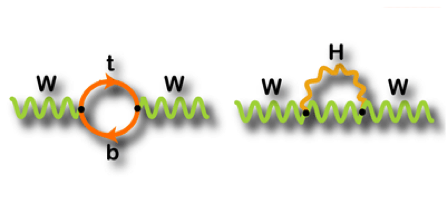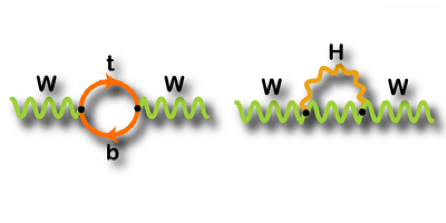W Marks the Spot
Long before experimentalists at the Large Hadron Collider reported hints of the Higgs boson in particle collisions (see 13 March 2012 Viewpoint), physicists knew roughly what the Higgs mass had to be from measurements of the W boson. That’s because according to the standard model, the W boson, one of the particles that mediates the weak interaction, can emit a virtual Higgs boson and reabsorb it, which alters the W boson’s mass. The mass of the W boson also shifts due to a virtual process containing a top and bottom quark. So with a precise measurement of the W mass, and a good measurement of the top quark mass, it is possible to predict the mass of the Higgs boson.
Now the CDF and D0 Collaborations at Fermilab are each reporting in Physical Review Letters their new measurements of the W mass using datasets containing a total of about 2 million W decays to an electron or muon and a neutrino. By analyzing the kinematics from this large sample, the two experiments achieve a combined precision of about .
These new values narrow the allowed range in top-W mass space. The band of top-W masses corresponding to the 115–127 GeV range of Higgs masses, allowed by direct searches, goes right through the allowed region determined by CDF and D0. If the LHC does find the Higgs boson in the 115–127 GeV mass window, it will be yet another success for the predictions of the standard model. – Robert Garisto





